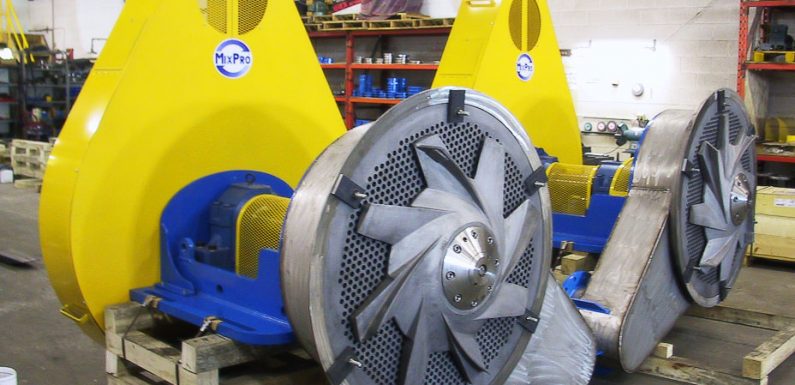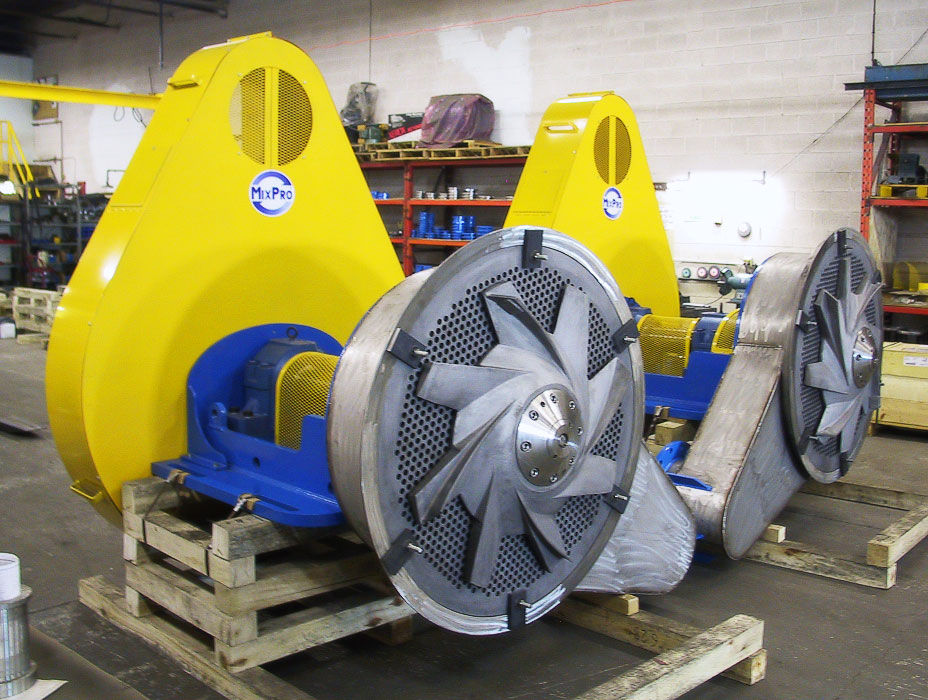
Industrial mixers for the paper & pulp industry are used to remove natural lignin by breaking down cellulose fibres and turning the heterogeneous mix into a more homogenous, consistent one.
This action of thoroughly and uniformly mixing chemicals to remove lignin makes industrial mixers indispensible machinery in the paper and pulp industry.

Industrial Mixers And Kraft Pulping
Know Hows Of Mixing
“The “cooking” process de-lignifies most of the pulp in Kraft Pulping.”
Using the industrial mixer machine, chips are mixed with white liquor (sodium hydroxide + sodium sulphide), heated to increase the reaction rate, and then disintegrated into fibres via blowing operation (sudden decrease in pressure).
Typically, the ratio of NaOH and Na2S per ton of dry wood used is 3:1. Mixing NaOH and Na2S is, like any chemical reaction, affected by time, temperature and concentration of chemical reactants. In order to achieve a reasonable cooking time, it is necessary to mix them at temperatures of between 150 and 165o
The success of delignification depends on how well the mixing process was carried out. The greater the homogeneity achieved during mixing, the better the delignification process occurs during the cooking, washing and bleaching stages.
Successful mixing also depends on determining when to interrupt or stop “cooking” the wood pieces. Heterogeneous reactions, however, are difficult to examine.
The degree of delignification is the most important parameter for determining pulp-quality. This number is directly related to the amount of lignin still remaining in the cooked pulp.
Types Of Kraft Cooking
There are two different cooking systems: batch and continuous.
Batch cooking: chips and white liquor mixed in an industrial mixer (pressure vessel) and heated with steam to a set temperature for a set time. When the estimated amount of de lignification has been achieved, the mix is blown.
In the continuous process: chips and white liquor are fed continuously to the top of a tall mixer or pressure vessel. The chips move down the digester under the influence of gravity to get blown from the bottom of the vessel. The cooking time is constant whereas the temperature and the chemical charge are varied.
Many developments have taken place during the last decade to improve the science of Kraft pulping and designing more efficient industrial mixers.
The challenge has been to remove as much of the lignin as possible without degrading the cellulose structure and losing too much yield. It is now well known that the concentrations of NaOH, Na2S and dissolved lignin during the various phases of de lignification are of crucial importance for pulp strength.
However, industrial mixers aren’t limited to one stage. They are literally used in all stages of the Kraft process for various applications including blending solids, liquids and gases, blending pulp, evenly disperse reactive chemicals, mixing of pulp streams, injection of chemical additives right before sheet formation, and allowing of full contact with bleaching chemical.
Pulp stock chest mixing, Pulp digester mixing, Kraft recovery process, mechanical pulp and thermo-mechanical pulp blending tanks, latency chests, and wastewater treatment processes are some of the other applications where industrial mixers are paramount.
Advantages Of Using Modern Industrial Mixers
- Successfully breaks up heels, solids, and stratification and heavy liquids in liquor tanks.
- Homogenizes and mixes different components in very large tanks during Kraft process.
- Prevents sedimentation of solids in backwater storage holding tanks
